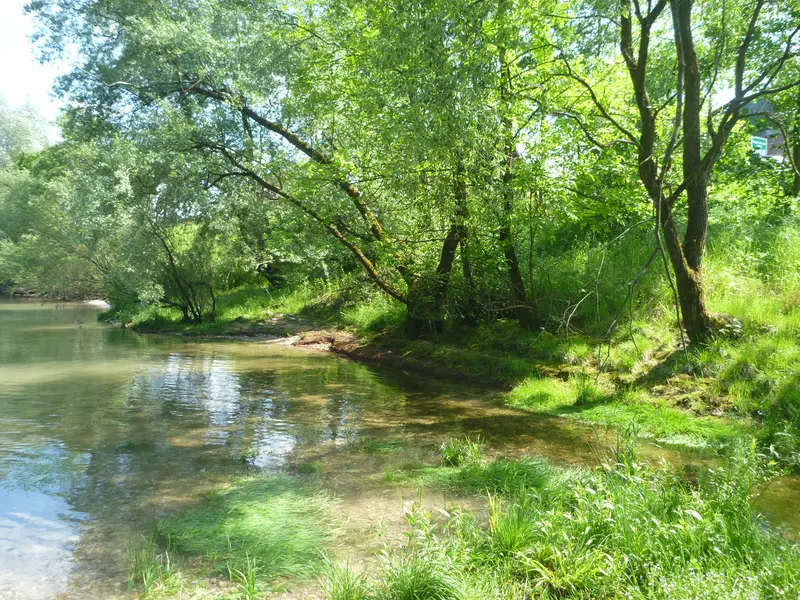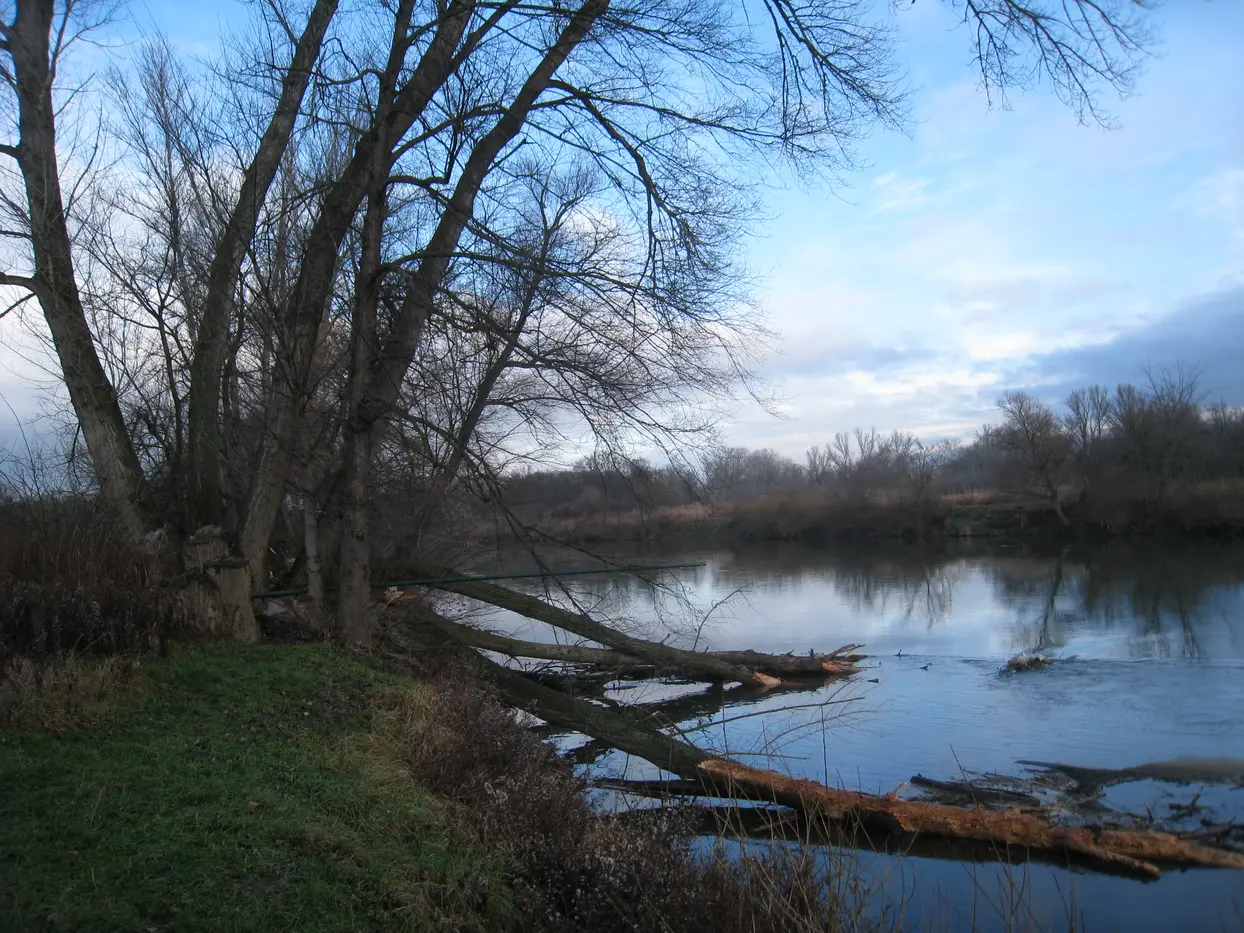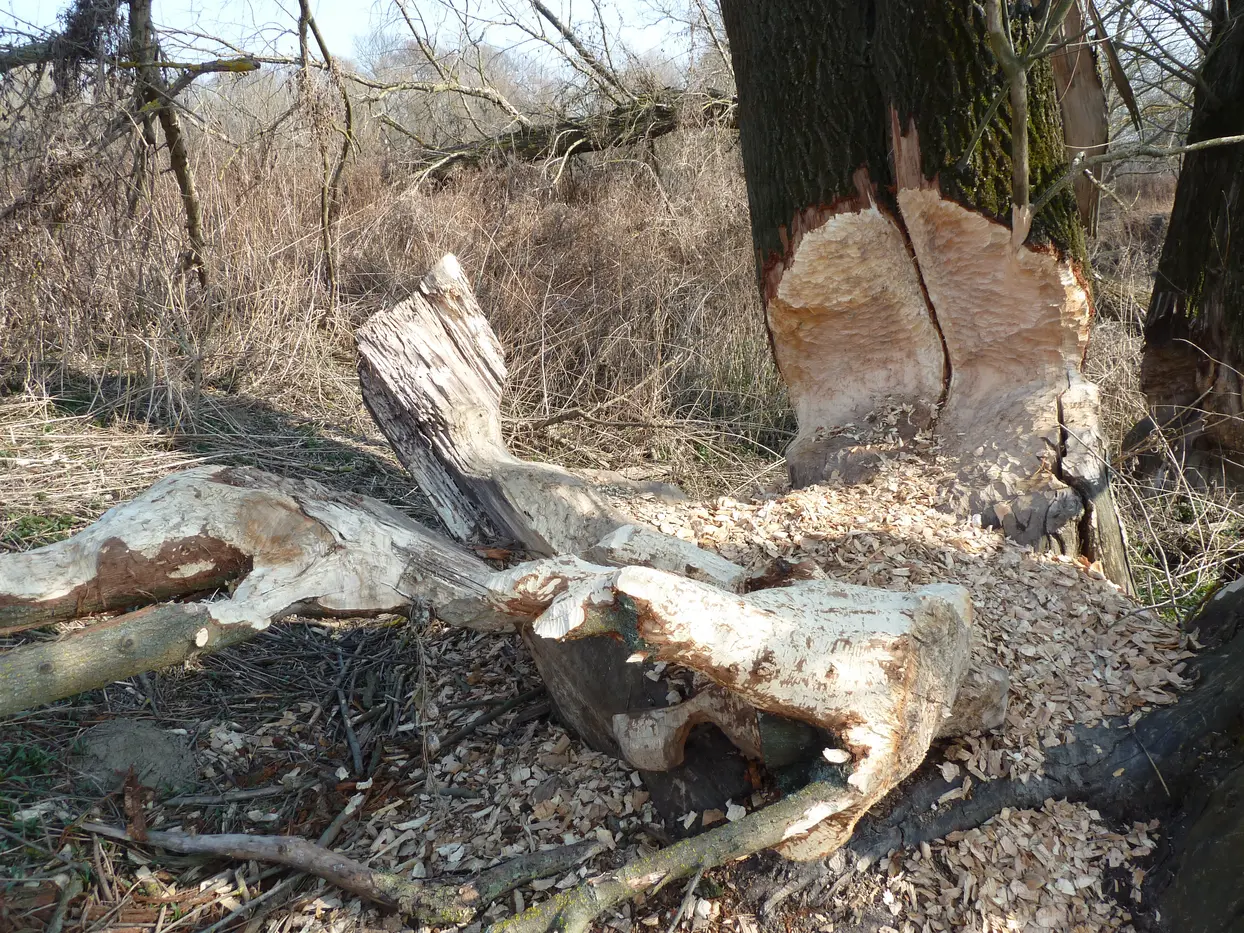The continuous thinning of trees is an integral part of forest management along the river, and special care is taken to leave dead wood undisturbed. The growth of native tree species that are appropriate to the location is also encouraged. Deadwood should ideally remain in sunny locations, either on the shore or in the water to promote thermophilic species such as reptiles and various species of insects. Any work deemed necessary to rejuvenate the woodlands is carried out in predefined and relatively small areas and never on a large scale that involves radical pruning. The riparian vegetation on the water’s edge serves not only as a nesting and breeding site for a multitude of birds, but also as a food source. Many wood-living insects user old trees and deadwood as their habitat. Special care is therefore taken with regard to the management of old trees to ensure that trees with cavities and insect nests are left undisturbed at sensitive times of the year. Target species such as cormorants, grey herons, black storks and white tailed eagles have all made these woodlands their home, as have a vast number of woodpeckers and other birds that nest in holes in trees. "Problem trees", which represent potential hazards to human health or infrastructure, are examined separately by external experts and assessed according to their conservation value, risk potential and structural characteristics. Recommendations are then made and the appropriate action taken
Dead wood in the water
Dead wood in the water increases structural diversity, causes small-scale changes to the oxygen flow rate and sedimentation, and therefore has a very important biotic function. Vegetation hanging into the water and woody debris provides spawning habitats and homes for various fish species. Floating deadwood is also an important structure for the depositing of eggs by amphibians (e.g. toad species), for aquatic insects and their larvae and for the pupation of species such as dragonflies. This importance is further underlined by the fact that around 60 species of domestic beetles live only on dead wood in the water!
Beaver management
The beaver has made the meadows of the Danube, March and Thaya its habitat. Once hunted for its fur and meat, since the 1970s this vegetarian rodent no longer needs to fear people. Despite the Red List listing the beaver as not being endangered, it is strictly protected by conservation orders in Vienna, Lower Austria and Upper Austria. As an umbrella species, the beaver is of significant ecological importance for the survival of river communities. It enriches the aquatic fauna by increasing structural diversity, thereby creating greater biodiversity. Although viadonau is responsible for the wellbeing of the beaver, there is seldom conflict between human utilisation of the meadows and the habitat structures of the beaver. Nevertheless, there are occasionally isolated incidents when viadonau has to intervene. Trees are protected with wire mesh, protective measures are applied to riverbanks and ditch areas and logjams caused by flooding are also dealt with. Trees that have been damaged by beavers gnawing them and represent a danger are felled but left where they fall so that the beaver still has building material and food. The provision of wide riverbanks is the sensible solution to avoiding conflict.



